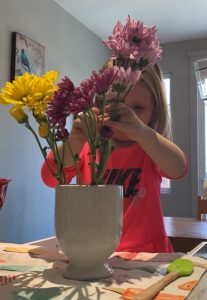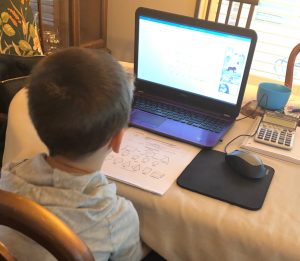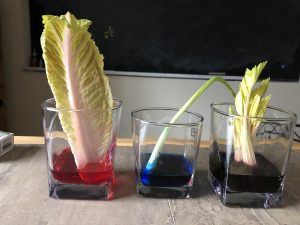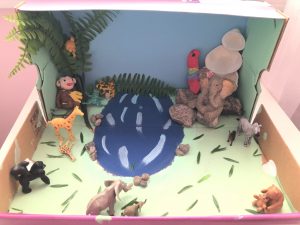For the past 4 weeks, our Elementary and 3rd year Casa students have been experiencing an MCS virtual classroom.
Many people ask how you can take an experiential, hands-on experience, as you would find in a Montessori classroom, and bring it to the virtual world? Our teachers have worked diligently researching the best practices in on-line learning and have built a strong program, tailored to the social and academic needs of each child.
Casa Program
Casa children meet for class at 9:00 a.m. until noon from Monday to Friday with Mrs. DeFrancesca. During the 3-hour work cycle, the students have opportunities to explore science experiments, reading activities, writing tasks, math challenges, project work, music, gym, French and social experiences. The students have daily opportunities to share their work with their peers and this has strengthened their public speaking, articulation and presentation skills. Schedules, handouts, printable materials, etc. are emailed to the parents before each morning so the students can come prepared for the all the exciting activities for each day. Fridays are a favourite as the students have been going on virtual field trips to museums, art galleries and zoos.

Flower Arranging: This toddler child is arranging flowers at home. The idea was shared with families as it is a favourite in the classroom!

Matching Fruits: This toddler child is matching fruit models with picture cards. The idea and cards were shared with the families.

Zoom Conference: This SK child is on a Zoom conference with his teacher.
Elementary Program
The Elementary students also have daily Zoom sessions from 9:00 – noon but they also have 1 hour each afternoon of a Specialty classes (French/Art, Gym, Music) plus twice weekly one-on-one sessions in the afternoon with their teacher. Through these one-on-one sessions, the teachers have the opportunity to support the students’ individual needs and give direct guidance and instruction based on the child’s individual learning needs and style.

Botany Experiment: The experiment was demonstrated by the teacher on Zoom and the students were then asked to find veggies in their fridge and re-create the experiment. They presented their findings a few days later.

Rainforest Project: The students learned about the rainforest and were asked to make a representation of what they enjoyed learning.
Nothing will ever compare to face-to-face interactions, but we believe our program has been the best solution during this stay-at-home period. We have found that the combination of group morning sessions and individualized afternoon sessions are meeting the student’s unique learning styles as well as addressing the need for social interactions and peer teaching. When we get back into the classroom, we are confident that our students will not have lost any learning momentum or social interactions. We are proud to be able to continue to support all aspects of our student’s education needs, including academic, social and most importantly mental health.
Posted: April 29, 2020
